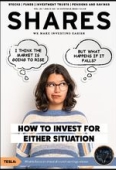Since the start of the year analysts have upped their 2022 earnings forecasts for Tesla (TSLA:NASDAQ) by around 22% to $4.10 per share while 2023 EPS forecasts have shot up around 40% according to Refinitiv data.
Higher expectations against a backdrop of slower global economic growth could prove a high bar for Tesla when its reports third quarter earnings (19 October).
Recent news has been somewhat encouraging with Tesla sales breaking new records in China, selling 83,135 electric cars in September according to the China Passenger Car Association.
The numbers suggest an 8% increase from August and are above the prior June 2022 record of 78.906 vehicles.
However, record sales numbers are not always a good guide to earnings. Tesla also broke delivery records in the second quarter but missed Wall Street earnings expectations.
Another factor for investors to juggle with is that Elon Musk has reversed tack on his attempts to wriggle out of buying Twitter (TWTR:NYSE) on the original offer at $54.20 per share. Twitter’s shares are up 55% from the lows in July.
This may prove a headache for banks which organized debt funding based on lower interest rates in April compared with prevailing rates today. According to Bloomberg, banks stand to lose as much as $500 million on potential write-downs.
‹ Previous2022-10-13Next ›

 magazine
magazine








